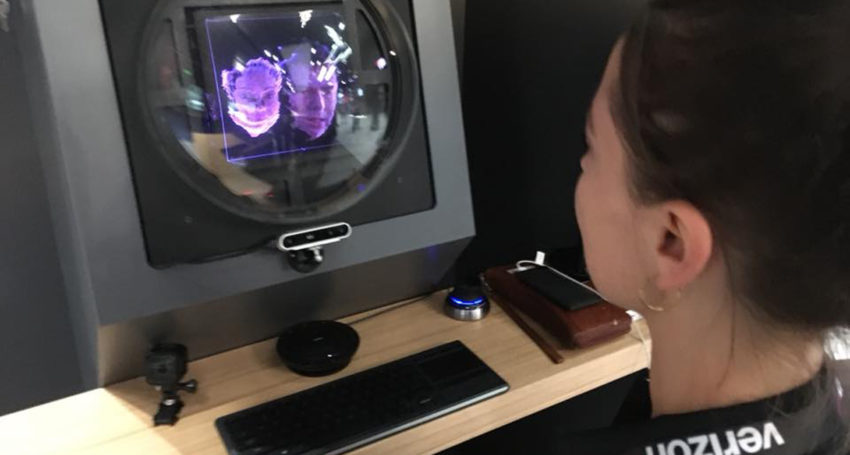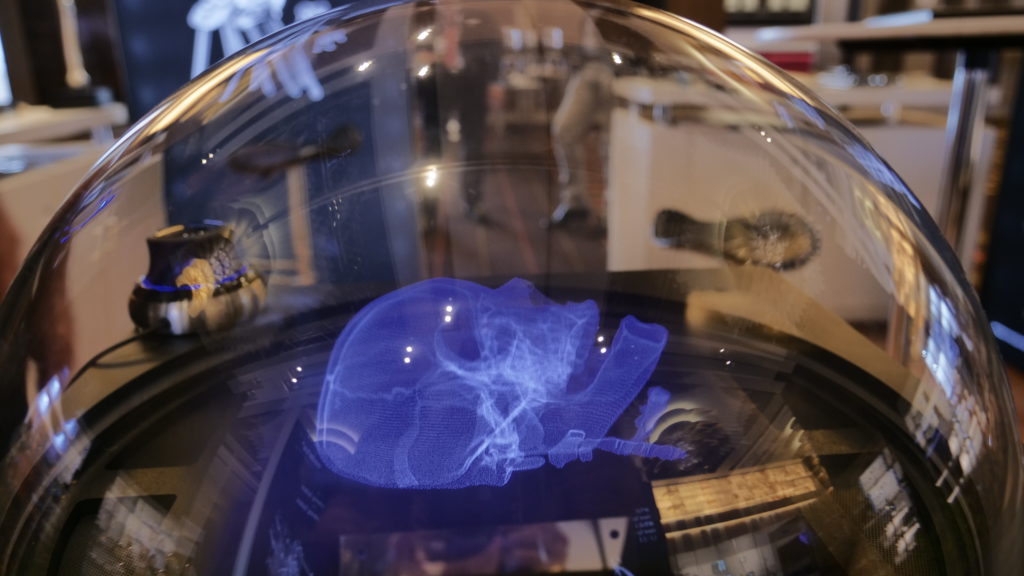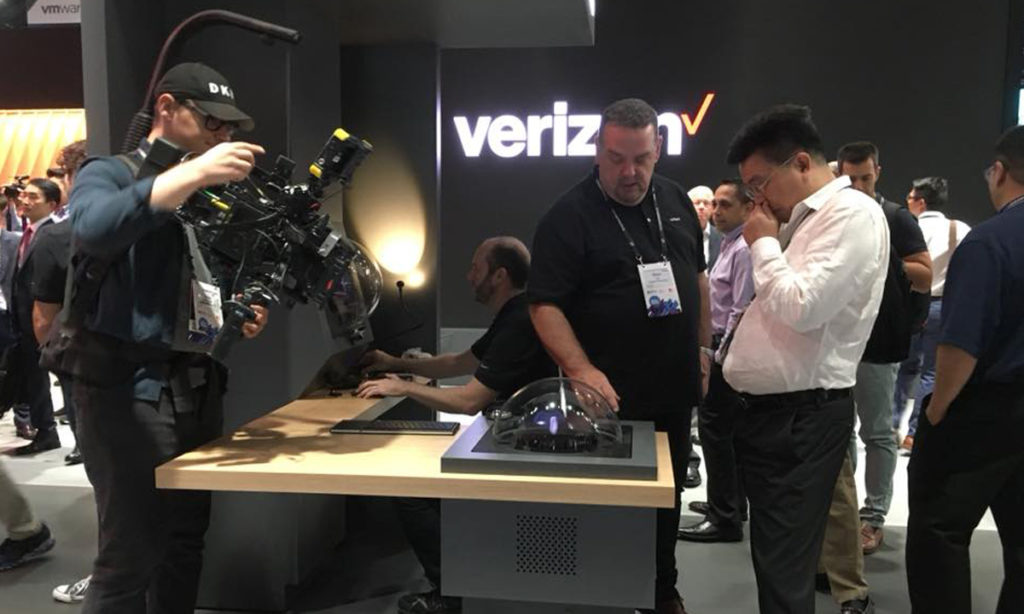Holographic video conferencing system uses 5G network to connect users in 3D
Technology
South Australian volumetrics business Voxon Photonics demonstrated its three-dimensional, two-way holographic video conferencing system over a 5G network at the Mobile World Congress Americas 2018 event in Los Angeles.

Sign up to receive notifications about new stories in this category.
Thank you for subscribing to story notifications.

The company’s Voxon VX-1 3D volumetrics unit was used to simulate a futuristic doctor-to-patient communication scenario with 3D hologram displays being shared across two spaces in real-time over a ultra-high-speed mobile connection supplied by international telecommunications company Verizon.
Voxon Photonics, based in Adelaide, South Australia, also partnered with mobile services corporation Ericsson to develop and showcase the project.
Voxon Photonics Chief Technology Officer and Co-Founder Gavin Smith said the project highlights the practicality of the technology for uses across a range of industries with demand for 3D volumetrics displays.

Voxon Photonics can be used for 3D medical imaging and a host of other applications.
“This project was really the catalyst for making a face-to-face communication display,” Smith said.
“It’s early days for video conferencing, but from the feedback we’ve had, we’ve got 10 or 20 potential use-cases for the technology, whether its communication, experiential advertising, education or simulation.”
“As a small company, we’ve got to be very careful of which potential market segments we invest our time, resources and money into.”
“What we’re looking for is corporate partners to evaluate the technology for their own uses or to just strengthen our own beliefs in some of the markets we believe it will be strong in, such as education and 3D gaming.”
The collaborative project took three months to complete and consisted of two holographic display booths at Verizon’s and Ericsson’s stands at the three-day event.

A second Voxon VX-1 3D volumetrics unit projected medical imaging during the 3D teleconference at the Mobile World Congress Americas 2018 event in Los Angeles.
The booths featured a two-way, holographic video communication system, which captured a user’s face in three dimensions using an Intel RealSense Depth camera, and live streamed the data onto Voxon’s 3D volumetric units. A hologram projection of medical imaging data sat next to each user as a reference for them to discuss.
“This is the first time we’ve used the software in a real-life scenario where we’ve created a shared social experience over a network, so you’re both viewing the same medical data in real time and sharing the same physical experience in two different locations,” Smith said.
“It’s [also] the first time we’ve been able to do it over a wireless connection as the bandwidth requirements are so high. We’re sending two 100-megabit streams over a wireless network, in this case it was Verizon’s 5G live mobile connection.”
Smith said that Voxon Photonics’ Voxon VX-1 unit is currently the only commercialised, market-ready advanced 3D volumetrics display product available.
Using the principle of “persistence of vision”, the VX-1 technology projects images into a space that has an x, y and z resolution that can be viewed from any angle without the need of a headset or 3D glasses.
Persistence of vision is the optical illusion that occurs when multiple discrete images blend into one due to the human eye’s inability to track high speed light.
“Our hardware, software platform projects 4000 cross sectional images onto a very high-speed physically moving screen, so we have a high-speed screen that physically resonates up and down and project cross sectional images,” Smith said.
“The timing of the display is such that each image hits the screen within one four thousandth of a second and through persistence of vision, you see all the slices together which creates a truly three-dimensional volumetric image which has the same physical attributes as a physical object.”
The physical volume of data that is rendered in each VX-1 unit is 18cm x 18cm x 8cm, the same size as the box that contains the projected light with a display resolution of 1000 x 1000 x 200, projecting 30 volumes of light every second at an average of around one million point of light for a single frame.
The South Australian company was co-founded by Smith and CEO Will Tamblyn 11 years ago in a garage shed where the pair would experiment with various objects, mechanics and gadgets. The business became incorporated in 2013 and is located at the Tonsley Innovation District in Adelaide, where it currently employs 10 staff.
Smith said the company is looking for new market opportunities for its technology.
“We’re building strong relationships with multiple partners across multiple industries and listening to the user requirements and directing all our company’s focus to proof-of-concept projects with companies,” Smith said.
Jump to next article



